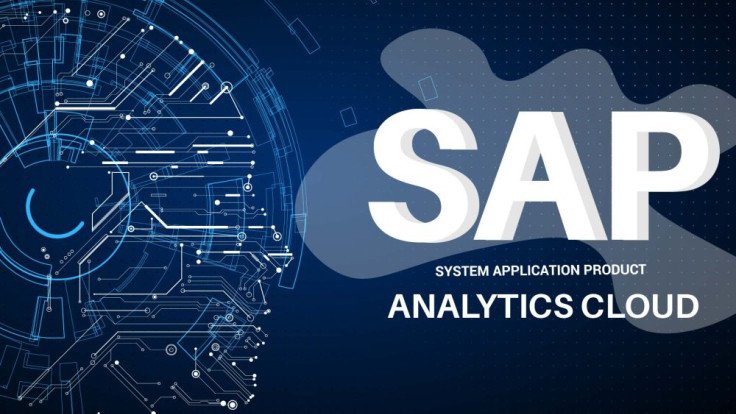The CFO’s Holy Grail: Unified Planning, Analysis, and Simulation with SAP Analytics Cloud
- Posted on October 9, 2025
- SAP BTP
- By ROI Blogger
- 102 Views

For generations, the Office of the Chief Financial Officer has been on a quest. It’s a search for a single, unassailable source of truth—a platform where the past, present, and future of the business can be viewed, understood, and shaped in unison. This quest, often dubbed the "CFO's Holy Grail," has led finance teams through treacherous landscapes of siloed spreadsheets, disconnected legacy systems, and a frustrating chasm between planning and analysis.
The traditional finance cycle is a familiar, if painful, story. The annual budget is painstakingly assembled in one system (or a complex web of Excel files). Actual performance data is then analyzed in a separate Business Intelligence (BI) tool. When leadership asks a critical "what-if" question—“What happens to our EBITDA if raw material costs increase by 15%?”—a frantic, manual scramble ensues. Analysts export data, build new offline models, and hope the formulas hold. By the time an answer is produced, it's often stale, and the confidence in the number is shaky at best.
This fragmentation is no longer sustainable. The modern CFO is not merely a steward of the company’s books; they are a strategic co-pilot to the CEO, expected to provide forward-looking insights that drive agile, data-informed decisions. In today's volatile economic climate, a reactive, rear-view mirror approach to finance is a direct threat to corporate resilience and growth.
The good news? The quest is over. The holy grail has been found, and it resides in the cloud. Platforms like SAP Analytics Cloud (SAC) are fundamentally transforming the finance function by unifying the three critical pillars—Planning, Analysis, and Simulation—into a single, cohesive environment.
Breaking Down the Walls: The Power of a Single Platform
SAP Analytics Cloud isn't just another BI tool or a planning application with a few charts bolted on. It was built from the ground up as an integrated solution. Let’s break down how this unified approach solves the age-old challenges for each pillar of the finance office.
1. Planning: From Static Ritual to Dynamic Strategy
Traditional financial planning is often a static, time-consuming ritual. The annual budget takes months to create and is frequently obsolete by the end of the first quarter. Collaboration is difficult, version control is a nightmare (think Budget_vF_Final_Johns_Edits_v2.xlsx), and the entire process is disconnected from real-time operational realities.
SAC reimagines planning as a dynamic and collaborative process.
-
Collaborative Enterprise Planning: Teams across the business can work together within a single, secure planning model. A sales manager can input their regional forecast, which automatically rolls up to the corporate level. The Head of HR can model headcount costs, and the impact on the P&L is reflected instantly. This eliminates the endless back-and-forth of emailing spreadsheets.
-
Agile Forecasting: The platform’s speed and integration enable a shift from static annual budgets to dynamic rolling forecasts. Instead of looking at a 12-month-old plan, the CFO can maintain an 18-month rolling forecast that is updated monthly or quarterly. This provides a far more accurate and relevant picture of the business trajectory.
-
Integrated Financials: With SAC, you can create sophisticated planning models that connect the P&L, balance sheet, and cash flow statement. Changes in revenue assumptions or capital expenditures automatically ripple through the entire financial model, providing a holistic view of financial health without manual reconciliation.
2. Analysis: From Historical Reports to Live Insight
The second pillar, analysis, has traditionally been the domain of BI tools that are excellent at looking backward. The problem arises when trying to compare this historical data with plan data residing in a separate system. This disconnect leads to the classic "apples-to-oranges" comparison, where finance teams spend more time reconciling data from different sources than actually analyzing performance.
SAC demolishes this wall by embedding powerful analytical capabilities directly alongside planning.
-
A Single Source of Truth: By connecting directly to source systems like SAP S/4HANA, SAC provides real-time access to actuals. Planners and analysts are looking at the same data, in the same interface. When the books close for the month, variance reports are available instantly. There is no data latency, no export/import process—just one version of the truth.
-
Intuitive Visualizations: Complex financial data is brought to life through interactive dashboards. The CFO can drill down from a corporate-level variance on a dashboard all the way to the underlying transactional line item that caused it, all within a few clicks.
-
Augmented Analytics: SAC uses artificial intelligence and machine learning to uncover hidden insights. The "Smart Insights" feature can automatically analyze a data point (e.g., a spike in operational expenses) and identify the key drivers behind the change, saving analysts hours of manual investigation.
3. Simulation: From Educated Guesses to Data-Driven Scenarios
This is where the magic truly happens and the strategic value of the CFO is unlocked. In a fragmented world, scenario modeling is a high-effort, low-confidence exercise. In the unified world of SAC, it becomes an intuitive, powerful tool for navigating uncertainty.
-
On-the-Fly "What-If" Analysis: Because planning and analysis are unified, a senior leader can perform powerful simulations directly within their dashboards. Using a simple slider, they can model the impact of a 5% increase in sales volume or a 10% decrease in marketing spend. The effect on revenue, margin, and cash flow is calculated and visualized in real-time.
-
Predictive Forecasting: SAC’s "Smart Predict" capabilities leverage historical data to generate a statistical forecast, providing an unbiased baseline for planners. This can be used to predict sales volumes, customer churn, or even payment defaults, adding a layer of data science to the forecasting process without requiring a team of data scientists.
-
Version Management for Scenarios: The platform allows for the easy creation and comparison of multiple scenarios. You can build a "Best Case," "Base Case," and "Worst Case" version of the forecast. This enables the CFO to walk into a board meeting armed not with a single, fragile number, but with a range of potential outcomes and the strategic levers that influence them. This transforms the conversation from "Did we hit the number?" to "How do we navigate the path to our desired outcome?"
The Ultimate Payoff: A Strategic Finance Function
By unifying planning, analysis, and simulation, SAP Analytics Cloud delivers the holy grail CFOs have been searching for: Agility with Confidence.
Decisions are faster because the time spent on data wrangling is converted into time spent on strategic analysis. Confidence is higher because everyone—from the departmental manager to the board of directors—is working from a single, trusted source of data. The finance team is elevated from being scorekeepers to being true strategic partners who can proactively model the future and help the business navigate any storm.
The quest for a unified view of the business is no longer a myth. It is a technological reality, and for the modern CFO, harnessing it is not just an opportunity—it is an imperative.





Write a Response